You are here
New Releases
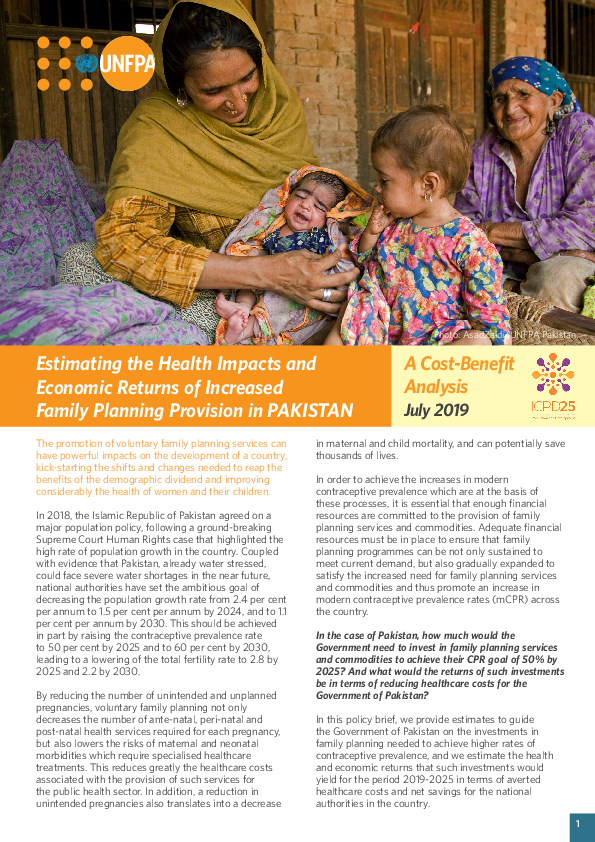
Pakistan Family Planning Cost Benefit Analysis
The promotion of voluntary family planning services can have powerful impacts on the development of a country, kick-starting the shifts and changes needed to reap the benefits of the demographic dividend and improving considerably the health of women and their children. In this policy brief, we provide estimates to guide the Government of Pakistan on the investments in family planning needed to achieve higher rates of contraceptive prevalence, and we estimate the health and economic returns that such investments would yield for the period 2019-2025 in terms of averted healthcare costs and net savings for the national authorities in the country.

Low fertility: A review of the determinants
Classic demographic transition theory assumed that fertility would decline from high levels and stabilize at the replacement level of around 2.1 children per woman. Yet nearly half of the global population now lives in a country with a period total fertility rate (TFR) below 2.1 children per woman (United Nations, 2019)1. Meanwhile, in many countries in Eastern Asia, Southern Europe, and parts of Central, Eastern and South-eastern Europe, fertility is even lower, with period TFR at 1.0-1.4 and completed family size at 1.4-1.6 births per woman born in the mid-1970s. Traditional development and geographic boundaries have been blurred with all major world regions, except sub-Saharan Africa, now firmly set on a decline towards low fertility. By 2050, more than two-thirds of the global population is projected to live in a country with fertility below a period TFR of 2.1 children per woman2 (United Nations, 2019).
Asia-Pacific Highlights 2018
In 2018, our regional and country programmes in Asia-Pacific UNFPA continued to accelerate the ICPD Programme of Action which in turn contributes to the 2030 Agenda and its Sustainable Development Goals.
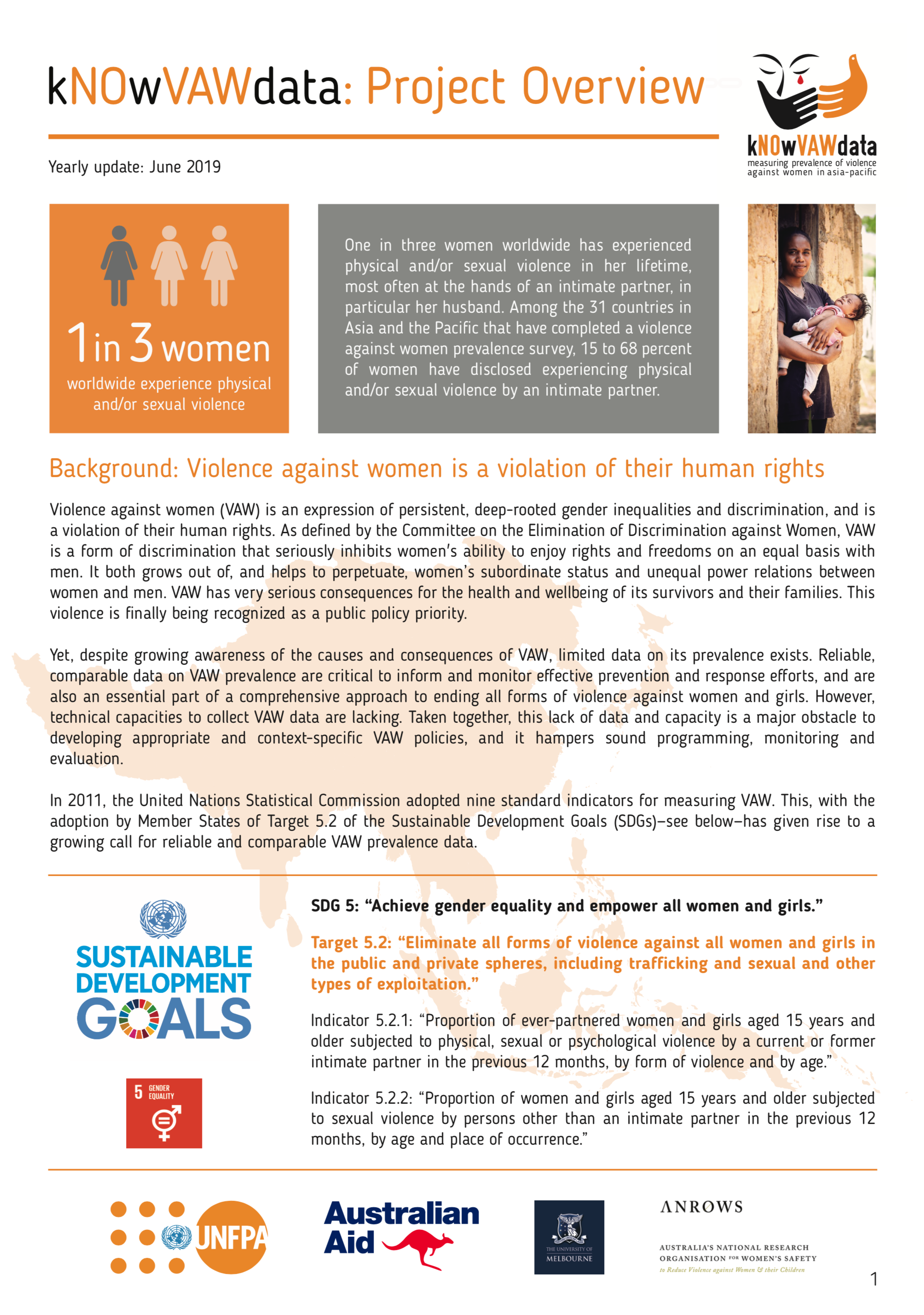
Project Overview - kNOwVAWdata
An overview of the kNOwVAWdata initiative, which sustainably supports and strengthens regional and national capacity to measure violence against women prevalence.

Policy responses to low fertility: How effective are they?
In the last three decades sub-replacement fertility has spread around the world. One-half of the global population today lives in countries where the period Total Fertility Rate is below 2.1 births per woman. East Asia, Southern Europe and parts of Central, Eastern and South-eastern Europe reached “ultra-low” fertility rates, with the period Total Fertility at 1.0-1.4 and family size at 1.4-1.6 births per woman born in the mid-1970s.
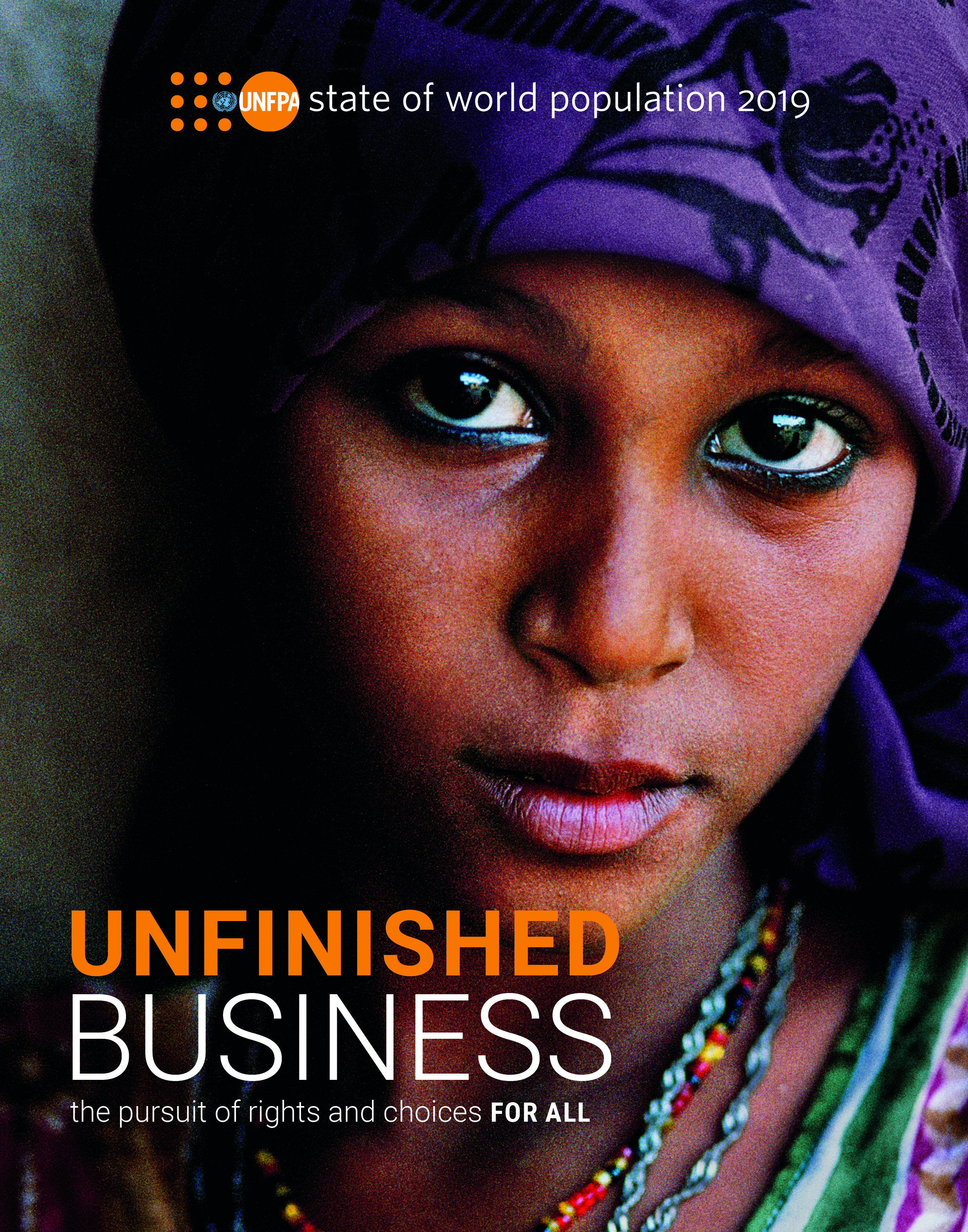
State of World Population Report 2019: Unfinished Business: The Pursuit of Rights and Choices for All
Reproductive rights and choices have become a reality for more women than ever. But we cannot be complacent: rights are still out of reach for too many women. Our challenge is to finish the unfinished business of guaranteeing rights and choices for all. Read our latest State of the World Population report 2019, published in a year that marks the 50th anniversary of UNFPA's founding and the 25th anniversary of the revolutionary Programme of Action forged at the International Conference on Population and Development in Cairo.
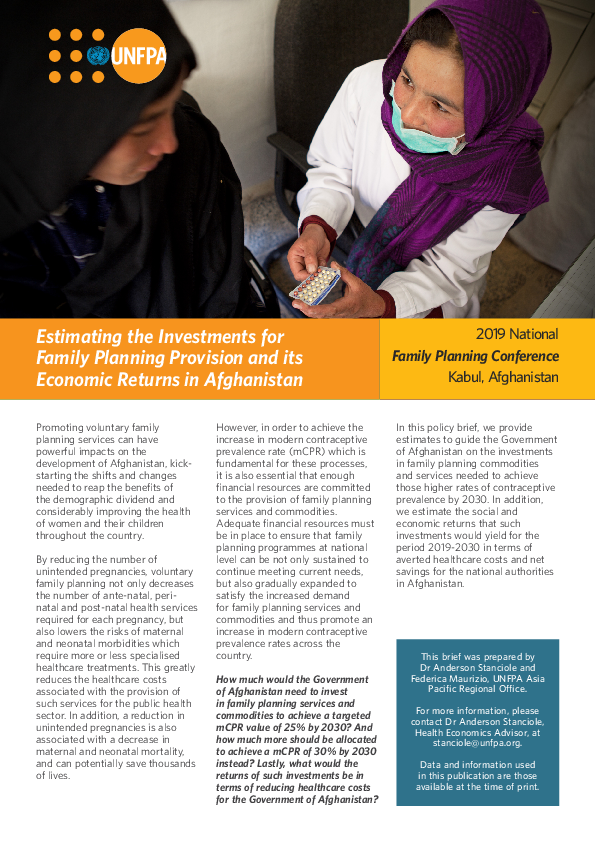
Afghanistan Family Planning Cost Benefit Analysis
Promoting voluntary family planning services can have powerful impacts on the development of Afghanistan, kickstarting the shifts and changes needed to reap the benefits of the demographic dividend and considerably improving the health of women and their children
throughout the country. By reducing the number of unintended pregnancies, voluntary family planning not only decreases the number of health services required for each pregnancy but also lowers the risks of maternal and neonatal morbidities. This greatly reduces the healthcare costs associated with the provision of such services for the public health sector. In this policy brief, we provide estimates to guide the Government of Afghanistan on the investments in family planning commodities and services needed to achieve those higher rates of contraceptive prevalence by 2030.
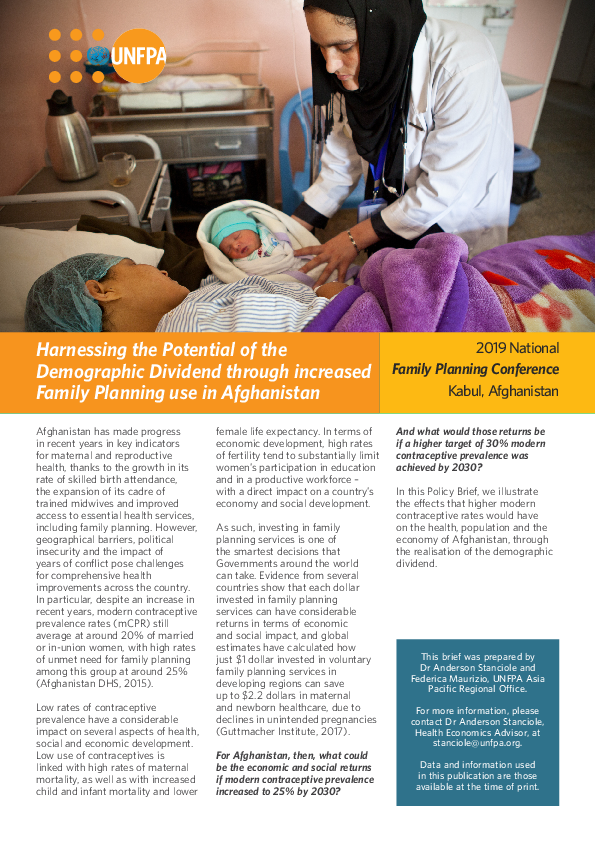
Harnessing The Potential Demographic Dividend in Afghanistan Through Increased Family Planning Use
Low rates of contraceptive prevalence have a considerable impact on several aspects of health, social and economic development. Low use of contraceptives is linked with high rates of maternal mortality, as well as with increased child and infant mortality and lower female life expectancy. In terms of economic development, high rates of fertility tend to substantially limit women’s participation in education and in a productive workforce – with a direct impact on a country’s economy and social development. In this Policy Brief, we illustrate the effects that higher modern contraceptive rates would have on the health, population and the economy of Afghanistan, through the realisation of the demographic dividend.
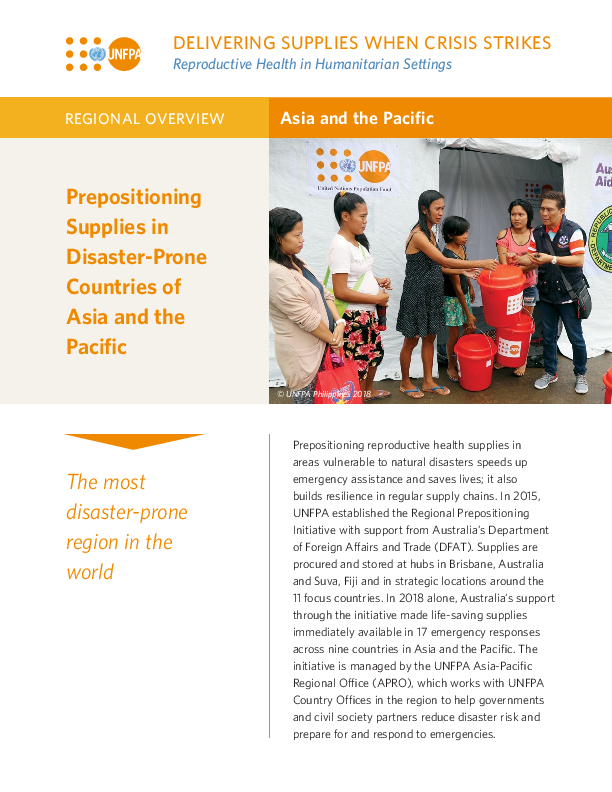
Prepositioning Supplies in Disaster-Prone Countries of Asia and the Pacific
Prepositioning reproductive health supplies in areas vulnerable to natural disasters speeds up emergency assistance and saves lives; it also builds resilience in regular supply chains. In 2015, UNFPA established the Regional Prepositioning Initiative with support from Australia’s Department of Foreign Affairs and Trade (DFAT). Supplies are procured and stored at hubs in Brisbane, Australia and Suva, Fiji and in strategic locations around the 11 focus countries.
Young People's Health and Well-being
Well-being education programmes build the resilience of children, adolescents and young people, empowering them to relate to others with respect, to make and carry out responsible decisions, and to deal effectively with change and challenge. This UNFPA Asia-Pacific policy brief invites Ministries of Education and other stakeholders to consider the wide-ranging benefits of a package of life skills, including social and emotional learning, to enhance the health and well-being for all students.